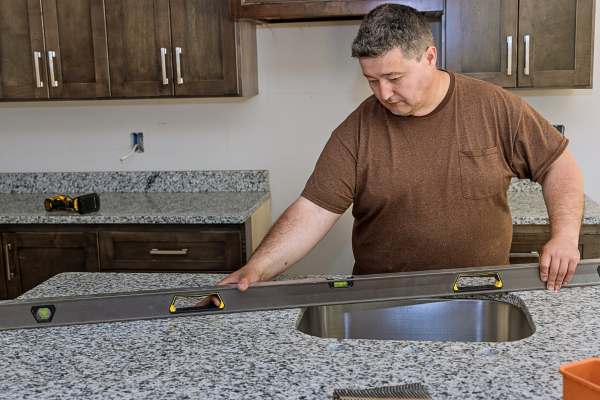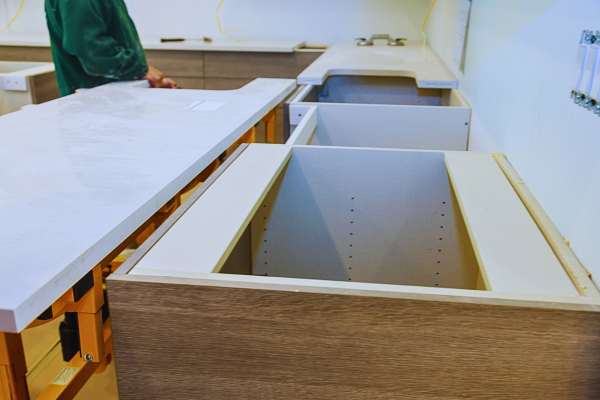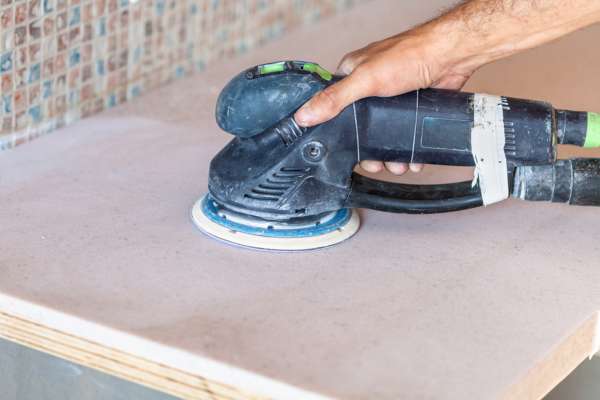Replacing kitchen countertops can be a transformative and cost-effective way to breathe new life into your kitchen. Whether you’re looking to upgrade the aesthetics, enhance functionality, or simply want a fresh look, this home improvement project offers a range of possibilities. In this comprehensive guide, we’ll walk you through the essential steps and considerations for successfully how to replace your kitchen countertops.
Why Replace Kitchen Countertops At All?
Before you embark on a kitchen countertop replacement project, it’s crucial to understand why you might need to replace them in the first place. Over time, countertops can show signs of wear and tear, become outdated, or simply not meet your changing needs. Replacing them can breathe new life into your kitchen, providing a fresh start for aesthetics and functionality.
Which Countertop Materials Are Most Durable?
Choosing the right countertop material is paramount. Different materials offer varying degrees of durability, maintenance, and style. Some of the most durable options include granite, quartz, and solid surface materials like Corian. These materials resist stains, scratches, and heat, making them excellent choices for long-lasting countertops.
Benefits Of Replacing Kitchen Countertops
Improved Appearance And Style
One of the most noticeable benefits of replacing your kitchen surfaces is the improved appearance and style it brings to your kitchen. Countertops are a focal point, and upgrading them can transform the entire look of your cooking space. Whether you prefer the elegance of granite, the warmth of wood, or the sleekness of quartz, there are countless materials and styles to choose from to match your design preferences.
Increased Home Value
Replacing your kitchen countertops can significantly boost your home’s value. Potential buyers are often willing to pay a premium for a kitchen that features modern, attractive countertops. It’s an investment that not only enhances your daily life but also pays off if you decide to sell your home in the future. Plus, it can make your home more competitive in the real estate market, attracting potential buyers and making your property stand out.
Enhanced Functionality
Functionality is key in any kitchen. When you replace your countertops, you have the opportunity to customize them to better suit your cooking needs. You can add features like built-in cutting boards, integrated sinks, or extra workspace for meal preparation. Additionally, some countertop materials are more durable and low-maintenance, making your daily kitchen tasks easier to manage.
Easier Maintenance
One of the primary benefits of replacing your kitchen surfaces is the ease of maintenance it brings. Older countertops, especially those made of laminate or tile, tend to accumulate stains, cracks, and grime over time, making them difficult to clean effectively. In contrast, modern countertop materials like quartz and granite are not only visually appealing but also highly durable and stain-resistant.
Updated Technology And Features
As technology advances, so do kitchen countertop features. By replacing your old countertops, you can integrate cutting-edge technology and features that enhance your cooking and overall kitchen experience. Consider installing built-in induction cooktops, under-counter lighting, or integrated wireless charging stations. These innovations not only make your kitchen more functional but also add a touch of modernity to your space.
Here Are Some Ideas How To Replace Kitchen Countertops
Plan and Budget

The first crucial step in replacing your kitchen surfaces is to plan and budget accordingly. Set a realistic budget that covers all expenses, including materials, labor, and any unexpected costs that may arise during the project. This initial planning phase will guide your decisions throughout the process, ensuring you stay on track financially and achieve your desired results.
Measure And Calculate

Accurate measurements are essential when replacing kitchen surfaces. Carefully measure the length and width of your existing countertops, including any protruding areas like islands or peninsulas. Take into account the depth and thickness of the new countertops you plan to install. Accurate measurements will help you purchase the right amount of materials and avoid costly mistakes. If you’re unsure about the measurements, consider hiring a professional to ensure precision.
Choose Countertop Material

Selecting the right countertop material is a critical decision in the replacement process. Your choice should align with your budget, style preferences, and functional needs. Common options include granite, quartz, marble, laminate, and butcher block. Granite offers durability and natural beauty, while quartz provides low maintenance and a wide range of design choices. Marble exudes luxury but may require more care. Laminate and butcher block are budget-friendly options. Research each material’s pros and cons to make an informed decision that suits your kitchen’s aesthetics and your lifestyle.
Remove Old Countertops

The first step in replacing kitchen countertops is to remove the old ones. Start by turning off the water supply to the sink and disconnecting any plumbing fixtures. Next, carefully use a utility knife to cut the caulk seal around the edges of the countertop. With a crowbar or a pry bar, gently lift the old countertop away from the cabinets. Be cautious during this step to avoid damaging the cabinets or backsplash.
Prepare The Cabinets

Once the old countertops are out of the way, it’s time to prepare the cabinets for the new ones. Inspect the cabinet surfaces for any bumps, rough spots, Or protruding nails And screws. Sand down any imperfections to create a smooth, even surface. Additionally, measure the dimensions of your cabinets accurately to ensure that your new countertops will fit perfectly.
Install New Countertops

Installing the new countertops is the final and most exciting step. Begin by placing the new countertops on the cabinets to check the fit. If necessary, trim the countertops to size using a circular saw or a jigsaw. Apply a bead of adhesive along the top edges of the cabinets and carefully position the new countertops on top. Secure them in place with screws from underneath. Reconnect plumbing fixtures, apply a fresh bead of caulk around the edges, and your new kitchen surfaces are ready to shine.
Cut Sink And Fixture Holes

Once your new countertops are securely in place, the next crucial step is to cut holes for the sink and fixtures. Measure and mark the exact positions where your sink, faucet, and other fixtures will be installed. Using a template provided with your sink or a hole saw, carefully cut out the holes. Take your time during this step to ensure precision and accuracy.
Attach Sink And Fixtures

With the holes cut, it’s time to attach your sink and fixtures. Apply a thin bead of silicone adhesive around the perimeter of the sink cutout. Carefully lower the sink into place, making sure it fits snugly. Secure it from underneath with clips or brackets provided with the sink. Next, install your faucet and any other fixtures following the manufacturer’s instructions. Double-check for any leaks and make necessary adjustments to ensure a watertight seal.
Seal And Finish

The final touch in replacing your kitchen surfaces is to seal and finish the project. Run a bead of caulk along the edges where the countertops meet the backsplash and walls to prevent water from seeping in. Smooth the caulk with your finger or a caulk smoothing tool for a clean look. Additionally, consider applying a countertop sealer to protect the surface from stains and damage. Follow the sealer manufacturer’s instructions for proper application and drying times.
The Final Thought
Replace kitchen countertops can be a challenging but rewarding home improvement project. By following these steps and tips, homeowners can save money and achieve the kitchen of their dreams. It is important to carefully consider the type of countertop material that suits your needs and budget. Additionally, measuring accurately, removing the old countertops properly, and installing the new ones with precision are key to a successful replacement.
